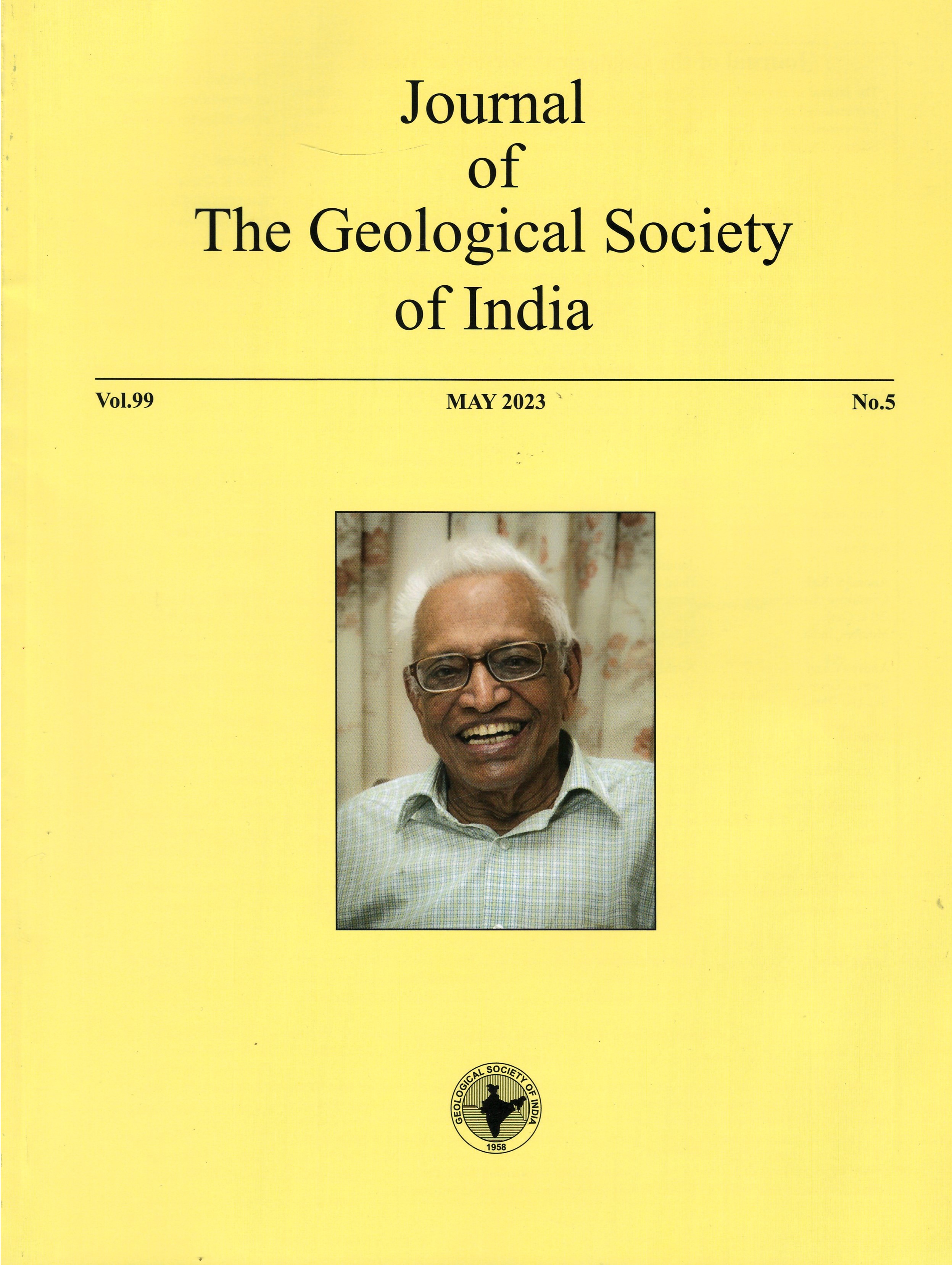Petrogenesis and Evolution of Tharad Coals of Cambay Basin, Gujarat (Western India): An Insight
DOI:
https://doi.org/10.1007/s12594-023-2368-zKeywords:
No Keywords.Abstract
The present paper discusses the evolution of the coal bearing sequences of Tharad Formation of Cambay Basin (Gujarat) based on coal petrological and organic geochemical signatures. Cambay Basin is a craton margin rift basin of Late Cretaceous age which is narrow and elongated. This north-south trending graben hosts huge sub-surface lignite/coal deposits of Early to Middle Eocene age. These coals have been petrographically and geochemically characterized to understand the type of flora, coal facies, depositional environment and coalification. Thickening of seams with depth is towards central part. Vitrinite rich Cambay Basin coals contain a considerable amount of liptinite indicating their derivation from the forest type of vegetation that grew under humid tropical climate while its high resin content indicates growth of conifers and gum-producing plants. High collodetrinite relates to soft woody tissues from herbaceous/bushy plant sources. Abundance of bioclasts in the western flank of the Sanchore low occur in stack indicating poor transportation and abrupt drop in bathymetry under tidal flat environment. The palynofloral assemblages indicate tidal deposition. Gas chromatography-mass spectroscopy (GC-MS) studies indicate low amount of oleanane suggesting a terrestrial source. The microlithotypes suggest limnic and telmatic mixed environment with typical forest floral input with intermittently changing water table conditions. The maceral composition of the coals indicates terrestrial origin having high tree-density. Marine influence caused influx of calcium rich water promoting decomposition of organic matter due to high bacterial activity and high pH values with depth. The ground water flow index (GWI) values indicate ombrotrophic hydrological condition while the vegetation index (VI) values support herbaceous plants. The swamp, therefore, suffered oxic and anoxic condition alternatingly with influence of reed marshes favouring the growth of anaerobic bacteria in high bathymetric region. The depth of burial of coal seams in Sanchore is extrapolated to be 1350-1800m with a temperature range of 40-80°C.

 Sanjay Ojha
Sanjay Ojha






